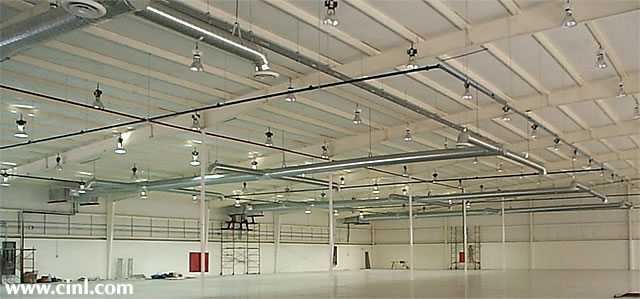Sometimes we come across a new client who has been burned when doing a lighting upgrade. They didn’t see the savings they were promised. LEDs use so much less energy than older lighting technologies that they are thought to be an easy win for a building. So how can a lighting upgrade go wrong?
Most lighting contractors want to do right for buildings, so let’s rule out deceptive sales practices for this example. And though it can surely be a factor, let’s also set aside mistakes in calculations of annual runtime hours and the use of blended rates vs. tail-block rates for calculating savings. I’d like to draw your attention today to how lighting and HVAC tie together, and how this can tank projected lighting savings.
Inefficient lights produce a lot of heat. So, when doing lighting upgrade, heating energy in the winter should increase and cooling energy in the summer should decrease, because the energy for lighting no longer heats the space. If done right, this is a benefit of the lighting upgrade because heating energy is typically cheaper than cooling energy. (So you lighting contractors out there, make sure your sales pitch includes reductions in cooling energy).
ERG calculates that lighting upgrades can eliminate 4-13% of a building’s cooling energy use, and 2-6% of its needed cooling capacity. Those cooling savings can boost the savings from the lighting upgrade up to 40%! It can be difficult to estimate in a particular case, because the energy savings depend on multiple factors:
- The decreased lighting kW
- The efficiency of the cooling equipment
- Patterns of lighting use/runtime hours
- The amount of cooling used in the LED retrofit spaces
- The shape of the building
- Type of heating system, and
- Type of cooling distribution system, and how well tuned it is.
Let’s talk about these last two items.
The type of heating system really matters. If a building is heated with electric resistance heat rather than natural gas, an electric heat pump, or other system, there could be trouble. Think of electric resistance heat as essentially the same technology as an incandescent lamp. The energy cost of heating a space with waste-heat from lights or with electric resistance are the same. After the lighting upgrade, the spaces needing heat – instead of being partially satisfied by waste-heat from the old lighting – will simply shift the heating watt-hours needed from the lighting to the electric resistance heat coming from the HVAC system. In our example case, ERG calculated that this applied to 97% of winter hours or ~45% of the hours of the year. So for nearly half of the year, the wattage reduction in lighting does not reduce energy use in the perimeter spaces (the heated spaces) of the building. How much of the building is usually in that heated perimeter? It varies widely. It can be lower than 25% for large cube-shaped buildings, or up to 100% for narrow smaller buildings. Either way it’s a big impact: from ~10%-45% of lighting energy savings nixed by electric resistance heat. So for lighting savings to materialize, it’s important that the building has a heating system that is either a cheap (natural gas, district heating) or efficient (heat-pump).
Secondly, in the cooling season, how well tuned the cooling distribution system is becomes very important. A problem that ERG frequently sees in building HVAC is the over-circulation of supply air in variable air volume (VAV) systems. This is a very common system in buildings, but unfortunately, it is not uncommon for the controls of these systems to put twice as much cooling air (at 55-degrees) into the spaces as is needed. This causes the twin energy problems of subcooling and reheat. As the excess 55-degree air reaches the space, either the space becomes too cold, or the VAV reheats the air before sending it into the room. VAV systems often reheat with – you guessed it – electrical resistance. So, when the lighting efficiency goes up and reduces the light-related heat in the space, the HVAC system adjusts to the reduced heat by… reheating the supply air! The heat that used to come from the light now comes from the VAV reheat – at the same energy cost as the prior lighting fixture. A space that is subcooled 100% of the time and reheated with electrical reheat will not show any energy benefit from reductions in lighting energy in the space. Granted, not all the spaces in a building will over-circulate and subcool, but for buildings that do, a lighting upgrade can lose a large percentage of its projected savings.
When lighting savings fail to materialize after a lighting upgrade, building managers should look at both the heating source-energy and HVAC controls as a probable culprit, and schedule a controls tune up. That’s right, heating system upgrades and RCx efforts can can fix this problem (and likely a lot more) in these buildings.






